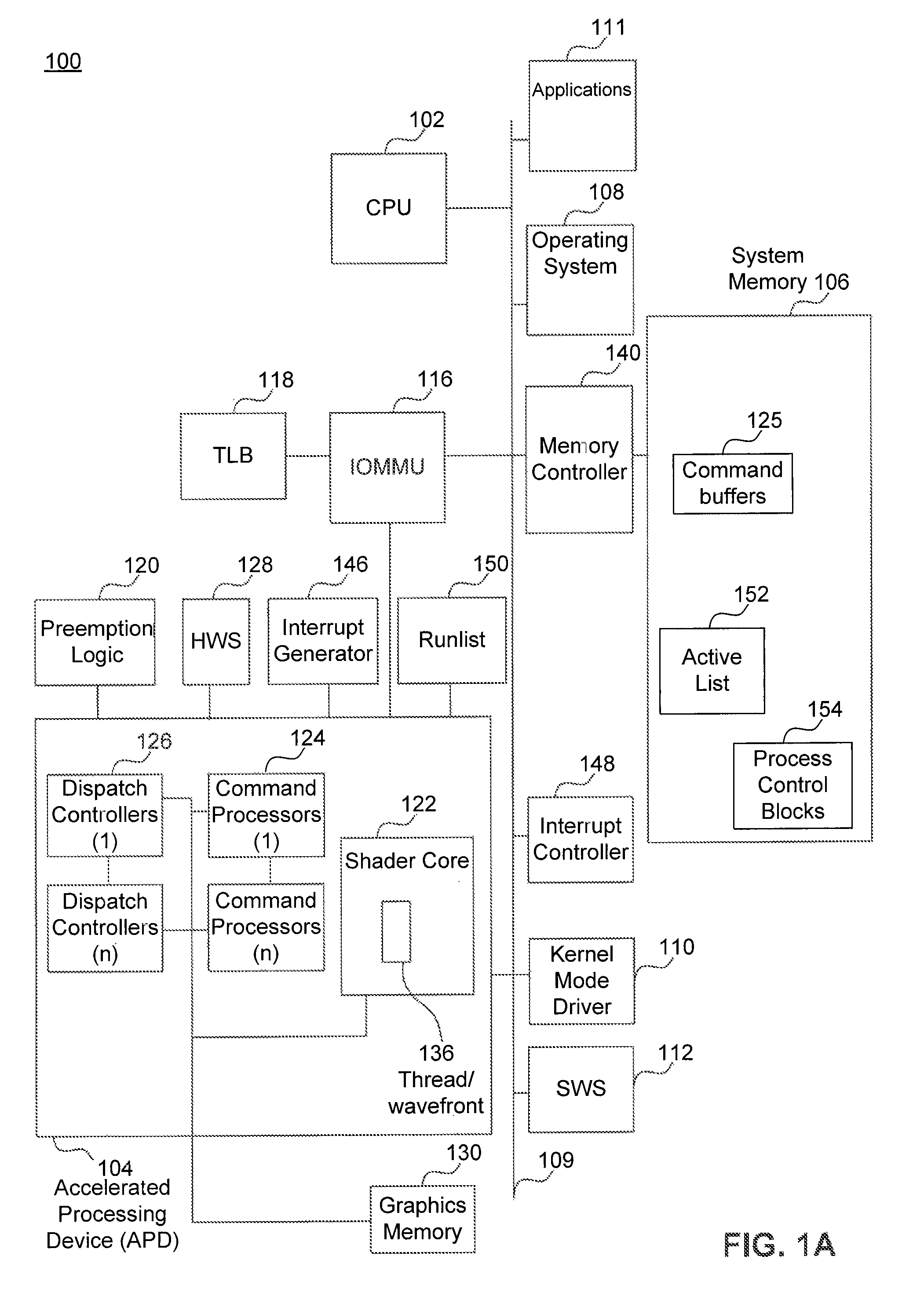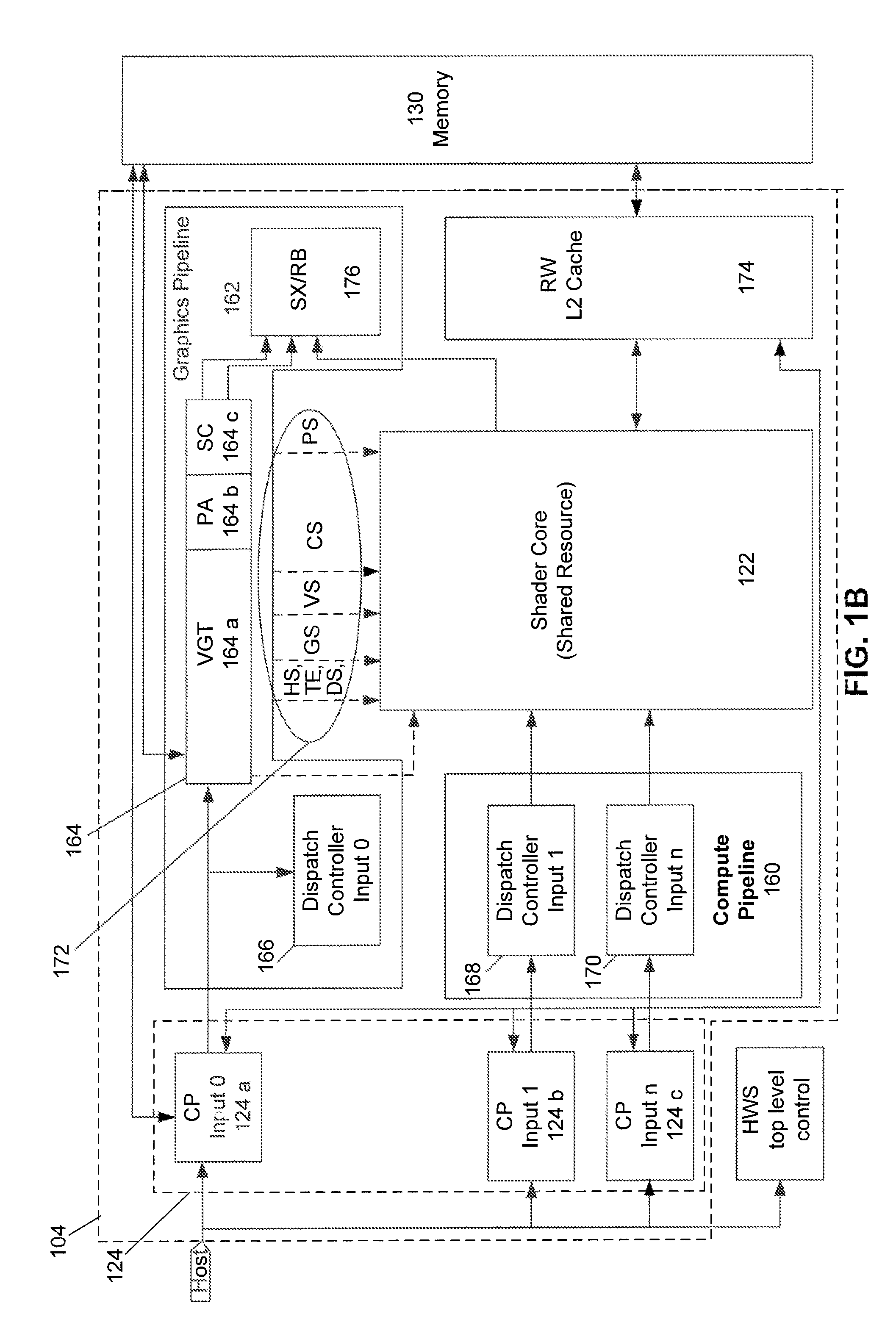Partitioning resources of a processor
a processor and resource technology, applied in the field of computing systems, can solve the problems of poor limited use, memory latency and power consumption, etc., and achieve the effect of full utilization of gpu resources, efficient and simultaneous launch of two or more tasks, and improving utilization of gpu processing resources
- Summary
- Abstract
- Description
- Claims
- Application Information
AI Technical Summary
Benefits of technology
Problems solved by technology
Method used
Image
Examples
Embodiment Construction
[0012]What is needed, therefore, are techniques to overcome the limitations of single task launch systems, thereby improving utilization of the GPU's processing resource. Embodiments of the present invention, in certain circumstances, provide scheduling techniques to efficiently and simultaneously launch two or more tasks within an accelerated processing device. The ability to simultaneously launch two or more tasks enables full utilization of the GPU's resources.
[0013]Although GPUs, accelerated processing units (APUs), and general purpose use of the graphics processing unit (GPGPU) are commonly used terms in this field, the expression “accelerated processing device (APD)” is considered to be a broader expression. For example, APD refers to any cooperating collection of hardware and / or software that performs those functions and computations associated with accelerating graphics processing tasks, data parallel tasks, or nested data parallel tasks in an accelerated manner compared to ...
PUM
 Login to View More
Login to View More Abstract
Description
Claims
Application Information
 Login to View More
Login to View More - R&D
- Intellectual Property
- Life Sciences
- Materials
- Tech Scout
- Unparalleled Data Quality
- Higher Quality Content
- 60% Fewer Hallucinations
Browse by: Latest US Patents, China's latest patents, Technical Efficacy Thesaurus, Application Domain, Technology Topic, Popular Technical Reports.
© 2025 PatSnap. All rights reserved.Legal|Privacy policy|Modern Slavery Act Transparency Statement|Sitemap|About US| Contact US: help@patsnap.com



